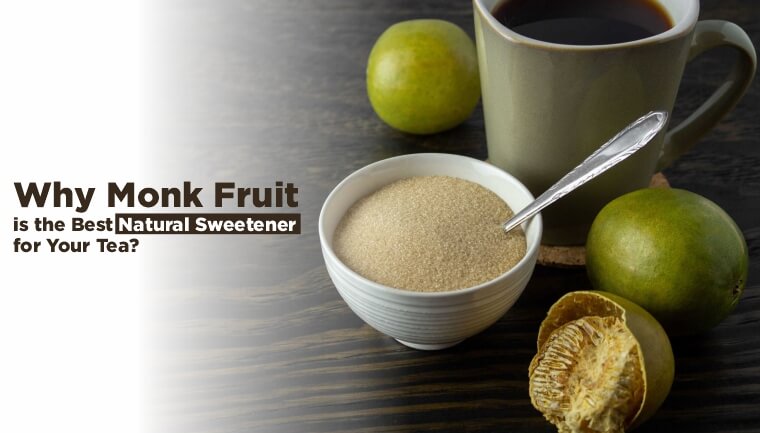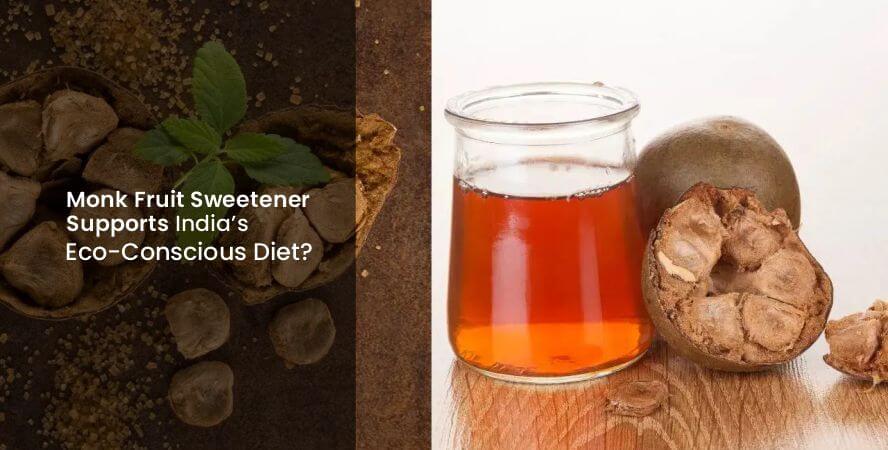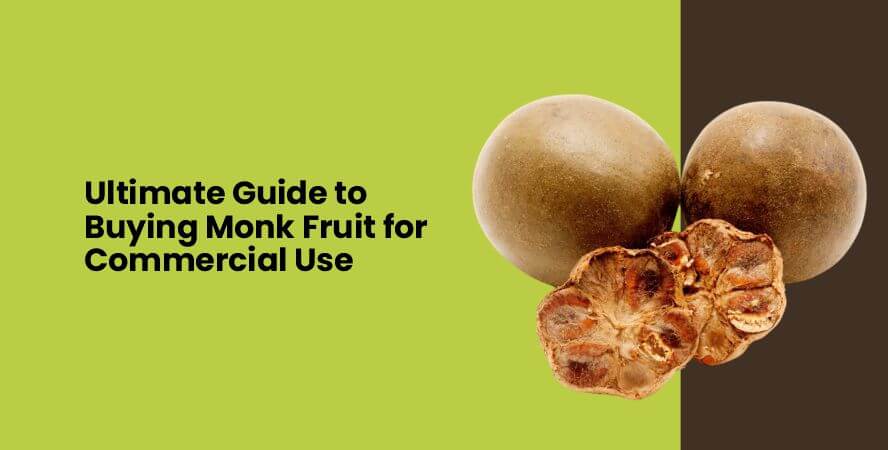Monk fruit extract is derived from the fruit’s mogrosides, compounds that are up to 200 times sweeter than sugar. This intense sweetness means you need only a small amount to achieve the desired flavour, making it cost-effective despite its premium price. Its heat stability ensures it performs well in baking, retaining sweetness even at high temperatures. For Indian households, where sweets like laddoos, halwa, and cakes are staples, monk fruit offers a way to enjoy these treats without the health drawbacks of sugar.
Benefits of Baking with Monk Fruit
1. Zero-Calorie Sweetness
Monk fruit sweetener is a zero-calorie option, perfect for those watching their weight or managing calorie intake. Whether you’re baking for a festive occasion or a daily treat, monk fruit allows you to indulge without guilt.
2. Diabetic-Friendly
With a glycaemic index of zero, monk fruit sugar doesn’t affect blood sugar levels, making it a safe choice for diabetics. In India, where diabetes is a growing concern, this sweetener is a boon for creating sweets that everyone can enjoy.
3. Natural and Safe
Unlike artificial sweeteners, monk fruit is 100% natural, derived from a fruit used in traditional Chinese medicine for centuries. It’s free from harmful chemicals, making it a wholesome choice for families.
4. Versatile in Recipes
Monk fruit powder blends seamlessly into batters, doughs, and frostings, mimicking sugar’s texture and sweetness. From traditional Indian sweets to modern cakes, it adapts to a wide range of recipes.
How to Bake with Monk Fruit Like a Pro?
Baking with monk fruit requires a few tweaks to achieve perfect results, as it behaves differently from sugar. Here are some expert tips to help you master sugar-free baking:
1. Understand the Sweetness Ratio
Monk fruit extract is much sweeter than sugar, so you’ll need less of it. A general rule is to use about 1/4 to 1/2 the amount of monk fruit sweetener compared to sugar. For example, if a recipe calls for 1 cup of sugar, start with 1/4 cup of monk fruit powder and adjust to taste. MONKNECTAR’s monk fruit sweetener often includes conversion guides on packaging to simplify this process.
2. Pair with Bulking Agents
Sugar adds bulk and structure to baked goods, which monk fruit lacks due to its concentrated nature. To maintain texture in cakes or cookies, combine monk fruit with bulking agents like almond flour, coconut flour, or erythritol. For Indian recipes like besan laddoos, mix monk fruit powder with the flour to achieve the right consistency.
3. Adjust for Moisture
Sugar contributes moisture to baked goods, while monk fruit doesn’t. To prevent dry textures, add wet ingredients like mashed bananas, applesauce, or ghee. This is especially important for Indian desserts like kheer, where moisture is key to a creamy texture.
4. Experiment with Ratios
Since monk fruit sweetener can vary in potency depending on the brand, test small batches first. For instance, when making gulab jamun, start with a small amount of monk fruit sugar and adjust based on the dough’s sweetness and texture.
5. Use in Frostings and Glazes
Monk fruit powder dissolves well in liquids, making it ideal for frostings, glazes, and syrups. For a sugar-free rasgulla syrup, dissolve monk fruit extract in water and simmer to create a sweet, glossy finish.
Popular Indian Recipes to Try with Monk Fruit
1. Sugar-Free Besan Laddoo
Besan laddoo is a festive favourite in India. Replace sugar with monk fruit sweetener to create a healthier version. Roast besan with ghee, add monk fruit powder, and shape into laddoos. The natural sweetness enhances the nutty flavour without overpowering it.
2. Keto-Friendly Kheer
Kheer, a creamy rice pudding, can be made sugar-free by using monk fruit extract. Cook rice or low-carb alternatives like cauliflower rice with milk, cardamom, and monk fruit sweetener. The result is a rich, aromatic dessert that’s diabetic-friendly.
3. Monk Fruit Gulab Jamun
For gulab jamun, use monk fruit sugar in the dough and syrup. Combine milk powder, a touch of flour, and monk fruit powder for the dough, then soak the fried balls in a monk fruit-based syrup infused with saffron and rose water.
4. Sugar-Free Carrot Halwa
Carrot halwa, or gajar ka halwa, is a winter staple in India. Grate carrots, cook with ghee and milk, and sweeten with monk fruit sweetener. Garnish with nuts for a guilt-free indulgence that retains the dish’s traditional warmth.
Challenges and Solutions in Baking with Monk Fruit
1. Aftertaste Concerns
Some monk fruit products may have a slight aftertaste. To counter this, blend monk fruit with other sweeteners like erythritol or add natural flavour enhancers like vanilla or cinnamon. MONKNECTAR’s monk fruit powder is formulated to minimise aftertaste, ensuring a clean, sweet flavour.
2. Cost Considerations
Monk fruit is pricier than sugar, but its intense sweetness means you use less per recipe. To make it cost-effective, buy in bulk from trusted suppliers like MONKNECTAR and store in an airtight container to maintain freshness.
3. Texture Adjustments
Since monk fruit doesn’t caramelise like sugar, it may not provide the same browning or crispness in cookies or cakes. To achieve a golden crust, brush baked goods with a little ghee or use a broiler for a quick finish.
Tips for Sourcing Monk Fruit in India
Monk fruit sweetener is increasingly available in India through online platforms and health food stores. Look for pure monk fruit extract or blends without artificial additives. MONKNECTAR offers high-quality monk fruit powder, ensuring consistent sweetness and purity. Always check labels for fillers like dextrose, which can add hidden calories.
Health Considerations and Precautions
While monk fruit is safe for most people, those with allergies to gourds (like melon or cucumber) should consult a doctor before use. Its zero-calorie nature makes it suitable for weight management, but moderation is key, as excessive consumption of any sweetener may affect taste preferences over time.
The Future of Monk Fruit in Indian Kitchens
As India embraces healthier eating habits, monk fruit is poised to become a staple in kitchens. Its versatility extends beyond baking to beverages, chutneys, and even savoury dishes. With growing awareness of sugar’s health impacts, monk fruit offers a sustainable, natural alternative that aligns with India’s love for sweets and wellness trends.
Conclusion
Monk fruit sweetener is transforming the way Indians bake, offering a deliciously sweet, sugar-free alternative that doesn’t compromise on flavour. From besan laddoos to keto-friendly kheer, monk fruit powder makes it easy to create healthier versions of beloved desserts. By understanding how to use it effectively—adjusting ratios, pairing with bulking agents, and experimenting with recipes—home bakers can master sugar-free baking like a pro. With suppliers like MONKNECTAR making high-quality monk fruit extract accessible, India’s culinary landscape is set for a sweet, healthy revolution. Embrace monk fruit and bake your way to guilt-free indulgence!








